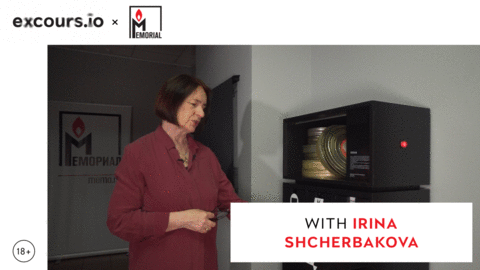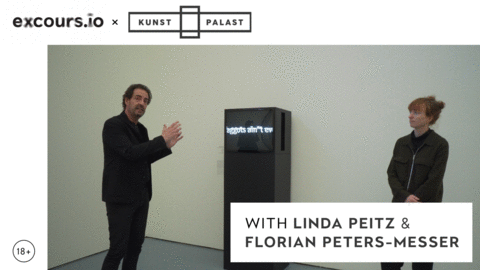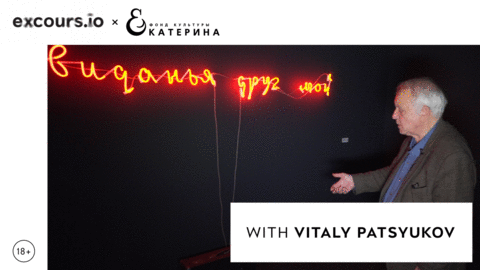“A” fell down, “B” is gone. Glossary of Soviet censorship. Censorship practices in the USSR from the first to the last day of the Soviet authorities
The exhibition serves as a poignant exploration of the pervasive and often absurd censorship that defined Soviet culture over 70 years. By navigating through the Russian alphabet—from the arrest of manuscripts to the Yauza tape recorder and the underground phenomenon of magnitizdat—visitors will uncover a narrative rich in both cruelty and resilience. Each letter unveils stories of meticulous scrutiny and cold repression, highlighting the complex interplay between censorship and state security, while also showcasing remarkable acts of civil defiance against artistic oppression. Enhanced by an array of documents, media, and artifacts, this exhibition invites you to explore the hidden layers of Soviet history and the power of creative expression that endeavored to resist the “red pencils” of authority.
Why should you watch this?
Being familiar with censorship practices is crucial in today’s increasingly polarized society, where issues of free speech and artistic expression are under threat globally. In an era marked by social media scrutiny, fake news, and governmental overreach, understanding the historical context of censorship serves as a stark reminder of the fragility of our rights and liberties. This exhibition resonates with contemporary struggles against misinformation, the suppression of dissent, and the erosion of trust in media and government institutions. By delving into the past, viewers gain insights into the tactics used to stifle voices and the importance of civil resistance. Thus, this tour becomes not just a historical observation, but a call to action, encouraging us to safeguard freedom of expression and advocate for a culture where diverse narratives can flourish without fear of repercussion in our modern landscape.
TIME FOR OUTRAGE! Art in Times of Social Anger | Discrimination
Can anger and rage be justified in a world riddled with oppression and inequality? Are these emotions destructive forces or vital catalysts for social change? As democracy faces crises and populism gains ground globally, these questions have sparked renewed debate. Contemporary artists have responded, using their work to navigate and challenge the pressing issues of our time.
The exhibition ‘Time for Outrage!’ in Düsseldorf explores these questions through six thematic blocks: Right-wing Shift, Trumpism, Protest, Postcolonialism, Feminism, and Discrimination. Across a diverse range of mediums — including installations, drawings, paintings, sculptures, photography, and video art — 40 international artists immerse viewers in the visceral realms of protest, social dissent, and public anger. The exhibition doesn’t just present anger as a raw emotion; it portrays it as a vehicle for dialogue, resistance, and empowerment in the face of systemic injustice.
A substantial portion of the works on display come from the collection of entrepreneur and collector Florian Peters-Messer, whose commitment to socially engaged art amplifies the urgent messages these pieces convey.
Why should you watch this?
Clemens von Wedemeyer – Mehrheiten [Majorities]
The exhibition critically examines the evolution of mass mobilization and crowd dynamics in both historical and contemporary contexts, drawing inspiration from Elias Canetti’s “Crowds and Power.” Set against the backdrop of the GfZK’s new architectural space, the exhibition engages with the complexities of collective action, exploring how digital public spheres shape democratic participation while simultaneously being exploited for exclusionary practices. Featuring a rich array of video installations and cinematic works, including the new production “70.001,” which reimagines the 1989 Leipzig demonstrations, “Majorities” invites reflection on the nuances of social behavior and the implications of simulated experiences in gaming and surveillance. Through this thoughtful presentation, Wedemeyer prompts us to consider the intertwining narratives of isolation and community, resonating powerfully in today’s fragmented society.
Why should you watch this?
Watching this guided tour is crucial in our current landscape marked by digital polarization and the resurgence of mass movements. As societies grapple with issues of identity, representation, and exclusion within online spaces, this exhibition offers a vital framework for understanding how crowd dynamics shape our collective psyche and political discourse. In an age where social media can amplify divisive ideologies, gaining insights into the historical and psychological underpinnings of mass mobilization is essential. The tour encourages participants to critically examine how these dynamics operate today, heightening awareness of the fine line between community engagement and manipulation. By exploring these themes, viewers are invited to reflect on their agency within the digital public sphere, making the experience not just an exploration of art and history, but also a compelling call to engage thoughtfully in the ongoing dialogue about democracy and social responsibility in our interconnected world.
TIME FOR OUTRAGE! Art in Times of Social Anger | Right-wing Shift
Can anger and rage be justified in a world riddled with oppression and inequality? Are these emotions destructive forces or vital catalysts for social change? As democracy faces crises and populism gains ground globally, these questions have sparked renewed debate. Contemporary artists have responded, using their work to navigate and challenge the pressing issues of our time.
The exhibition ‘Time for Outrage!’ in Düsseldorf explores these questions through six thematic blocks: Right-wing Shift, Trumpism, Protest, Postcolonialism, Feminism, and Discrimination. Across a diverse range of mediums — including installations, drawings, paintings, sculptures, photography, and video art — 40 international artists immerse viewers in the visceral realms of protest, social dissent, and public anger. The exhibition doesn’t just present anger as a raw emotion; it portrays it as a vehicle for dialogue, resistance, and empowerment in the face of systemic injustice.
A substantial portion of the works on display come from the collection of entrepreneur and collector Florian Peters-Messer, whose commitment to socially engaged art amplifies the urgent messages these pieces convey.
Why should you watch this?
Train Arrival
“Arrival of the Train” is a captivating exhibition that unites over a hundred artistic works from both Russian and international creators, celebrating the train’s rich cultural significance as a harbinger of change and progress. It delves into the multifaceted roles of trains throughout history—from transformative technological marvels to poignant symbols in art—inviting viewers to journey through time and space. Showcasing everything from the historic funeral train of Lenin to the nostalgic echoes of the Trans-Siberian Railway, the exhibition highlights the train’s enduring impact on civilization and its power as a vessel for communication and innovation, ultimately crafting a shared narrative that connects cultures and eras in a uniquely dynamic way.
Why should you watch this?
The tour offers profound insights into our rapidly changing social landscape. In an era marked by globalization, technological advancement, and environmental challenges, the train serves as a metaphor for the interconnectedness of cultures and the migration of ideas. The exhibition elevates the experience, providing expert interpretations that illuminate how the train symbolizes not only progress but also the historical traumas associated with industrialization and modernization. As society grapples with issues like climate change, urbanization, and the quest for sustainable mobility, this exhibition invites reflection on our past and present relationship with transportation and technology. Engaging with these themes alongside knowledgeable curators allows viewers to critically assess their own narratives and environmental footprints, fostering a deeper connection to both art and contemporary global issues.
TIME FOR OUTRAGE! Art in Times of Social Anger | Introduction
Can anger and rage be justified in a world riddled with oppression and inequality? Are these emotions destructive forces or vital catalysts for social change? As democracy faces crises and populism gains ground globally, these questions have sparked renewed debate. Contemporary artists have responded, using their work to navigate and challenge the pressing issues of our time.
The exhibition ‘Time for Outrage!’ in Düsseldorf explores these questions through six thematic blocks: Right-wing Shift, Trumpism, Protest, Postcolonialism, Feminism, and Discrimination. Across a diverse range of mediums — including installations, drawings, paintings, sculptures, photography, and video art — 40 international artists immerse viewers in the visceral realms of protest, social dissent, and public anger. The exhibition doesn’t just present anger as a raw emotion; it portrays it as a vehicle for dialogue, resistance, and empowerment in the face of systemic injustice.
A substantial portion of the works on display come from the collection of entrepreneur and collector Florian Peters-Messer, whose commitment to socially engaged art amplifies the urgent messages these pieces convey.
Why should you watch this?
Haim Sokol. Testimony
Haim Sokol’s solo exhibition delves into the intricate interplay of memory and oblivion, offering a poignant exploration of individual narratives amidst historical upheaval. Blending documentary material with artistic expression, Sokol showcases a decade’s worth of work that includes videos in collaboration with migrant workers, a workshop dedicated to the art of protest, and a thought-provoking examination of “paper memory.” The exhibition features a rich tapestry of forms — drawings, performances, installations, and objects crafted from diverse materials such as metal, leather, and plastic — all converging around the central video installation “Testimony,” which poignantly recounts his father’s harrowing experiences in a ghetto during WWII. This compelling collection not only honors those marginalized in history but also ignites crucial conversations about identity, resilience, and the significance of personal testimonies in contemporary art.
Why should you watch this?
The guided tour provides a vital lens through which we can confront and reflect on pressing contemporary issues such as migration, displacement, and the struggle for recognition. In an era marked by increasing xenophobia and political polarization, Sokol’s exploration of marginalized voices and historical amnesia resonates deeply, urging us to confront our collective past and present. The guided tour offers insights that enrich our understanding of how memory shapes identity and informs socio-political discourse, making it particularly relevant as today’s world grapples with the consequences of both historical injustices and ongoing humanitarian crises. Engaging with Sokol’s work through a guided narrative not only enhances appreciation for the artistry involved but also emphasizes the urgency of empathy and awareness in combating societal erasure and advocating for the dignity of all individuals.



![Clemens von Wedemeyer – Mehrheiten [Majorities] Clemens von Wedemeyer – Mehrheiten [Majorities]](https://cloud.excours.io/film-previews/clemens-von-wedemeyer.gif)



